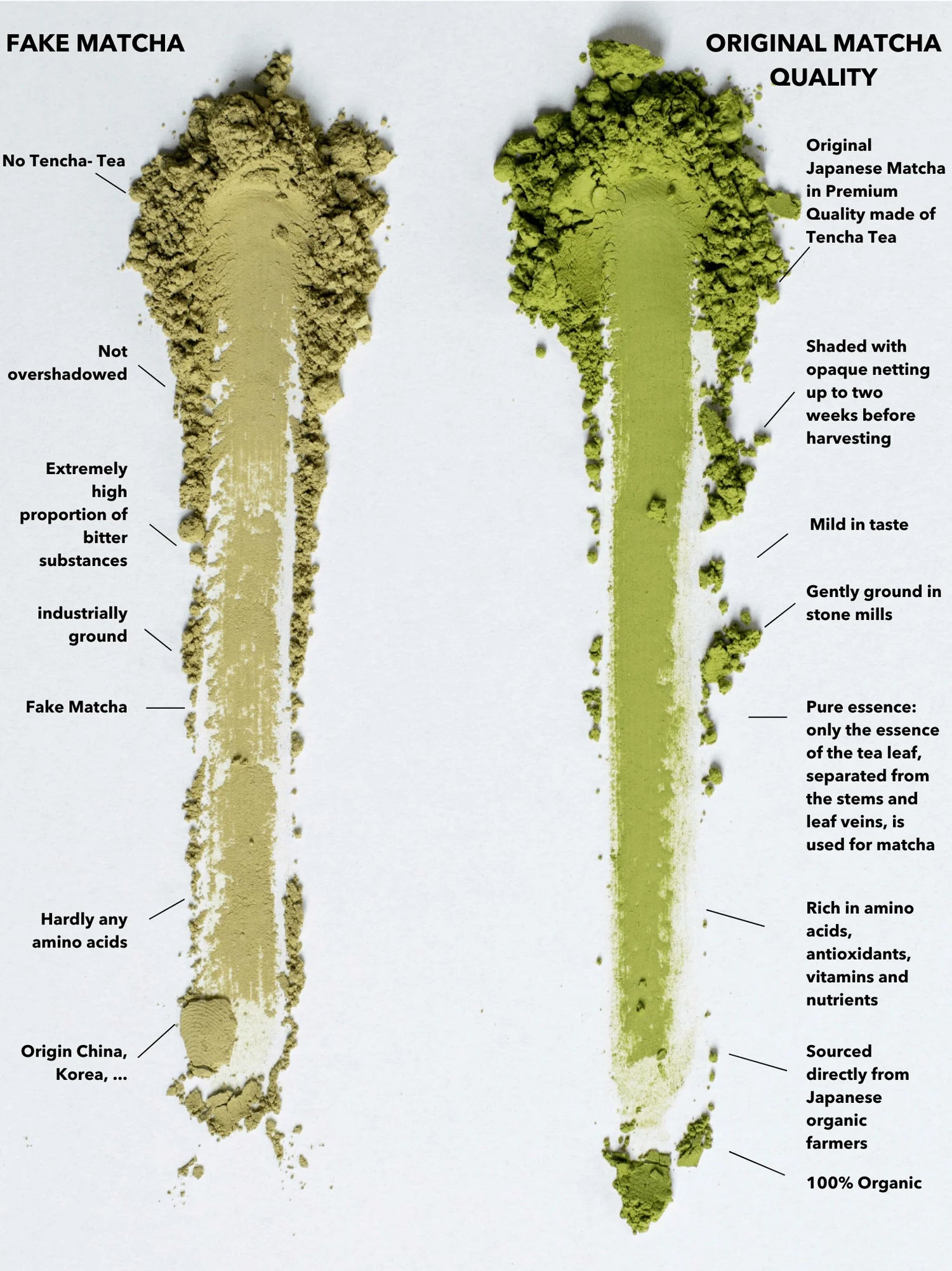Our Matcha Grades.
Our Supreme Ceremonial-Grade Matcha is made exclusively from first-harvest tea leaves, carefully selected to ensure the highest quality. Ceremonial-grade blend combine leaves from both first and second harvests, while Organic blend may include leaves from different harvests, depending on seasonal quality and raw material availability.
The exceptional quality of our matcha begins at the source. We exclusively supply our matcha from Kagoshima Prefecture, Japan, a region renowned for its fertile volcanic soil and centuries-old tea-growing tradition. The warm, humid climate and nutrient-rich land create the perfect environment for cultivating vibrant, flavorful matcha. Discover more about our sourcing and sustainability practices on our Matcha’s Origin & Production page.
What is Matcha?
Matcha is a finely ground green tea powder that has been part of Japanese tradition for over 800 years. Originally used by Buddhist monks for meditation, it is now valued for its unique combination of natural caffeine and L-Theanine, which promotes alertness and relaxation at the same time.
Unlike regular tea, matcha is made by grinding whole shade-grown tea leaves, preserving all their nutrients and antioxidants. It is one of the most antioxidant-rich natural foods, with a significantly higher ORAC value than goji berries, pomegranates, or blueberries, making it a powerful ally against free radicals and cell damage.
With its rich umami taste and smooth texture, matcha is enjoyed in traditional tea ceremonies, lattes, and various culinary creations. 🍵
Matcha Tea: Authentic vs. Fake.
Not all matcha is the same. Like other teas, it comes in different quality levels, determined by region of cultivation, farming techniques, and processing methods. The finest matcha is made from shade-grown Tencha leaves, carefully ground using granite stone mills to achieve a smooth, vibrant green powder.
How to Identify High-Quality Matcha
Aroma – Premium matcha has a sweet, creamy, and slightly herbal scent due to its high L-Theanine and amino acid content. Low-quality green tea powders, often mislabeled as matcha, lack these amino acids, resulting in a harsh, bitter taste.
Color & Texture – Authentic matcha has a brilliant emerald-green color and an ultra-fine texture with a particle size between 5–17 micrometers, making it feel soft and smooth. Imitation matcha, often made from standard green tea leaves, appears yellowish-brown and feels coarse.
Ingredients & Effects – Real matcha is rich in L-Theanine, chlorophyll, and antioxidants, promoting calm focus and sustained energy. Fake matcha, made from standard green tea leaves (including stems and veins), lacks this full nutrient profile and has weaker effects.
Why Authenticity Matters
True matcha originates exclusively from Japan, where Tencha leaves are carefully shaded before harvest, increasing their chlorophyll content, amino acids, and antioxidants. Traditionally stone-ground matcha retains its nutritional value and smooth taste, unlike imitations that are mechanically processed.
For pure, organic, high-quality matcha, always choose authentic Japanese matcha sourced from reputable farms. We encourage you to test any matcha you try by following the process below. Try the Stroke Test with Nawo matcha, and if you're not satisfied, we’ll refund your purchase—no questions asked.

The Matcha Stroke Test
Since "matcha" is not a protected term, many low-quality, industrially processed teas are misleadingly sold as matcha. A simple "stroke test" can help identify authentic matcha:
1️⃣ Place a small amount of matcha powder on a dry surface.
2️⃣ Use your finger to gently swipe the powder.
3️⃣ Authentic matcha will spread smoothly and create a soft, even stroke.
4️⃣ Fake matcha will appear grainy and uneven, indicating a coarser grind.